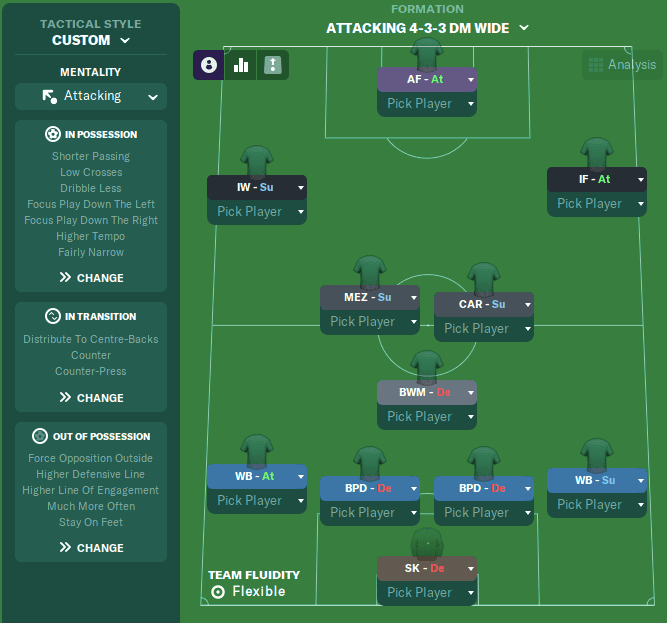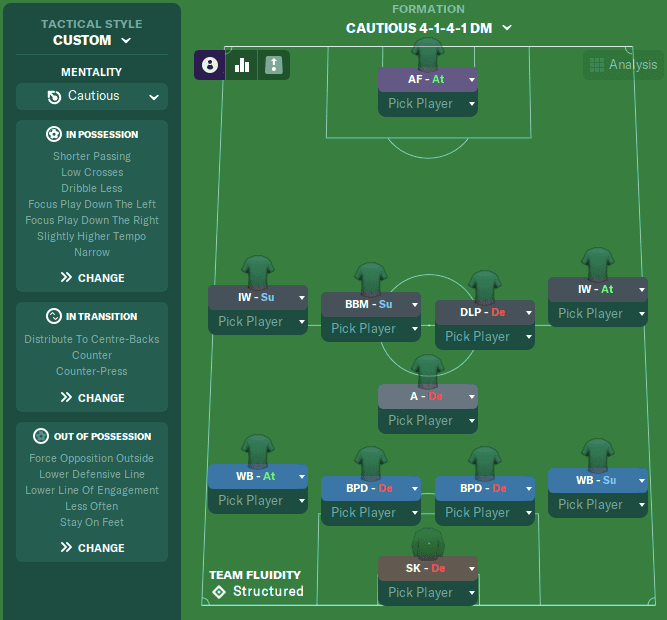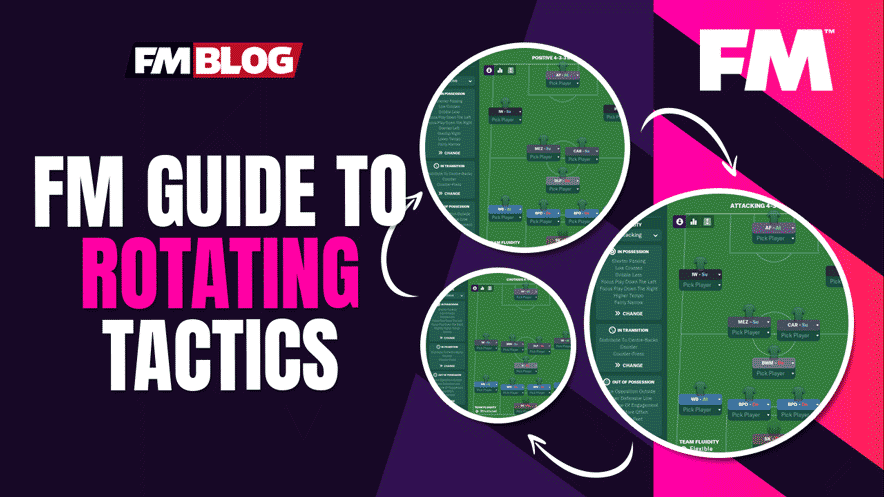Master Football Manager with expert tactics: Learn to rotate between Attack, Control, and Defend strategies, optimize training, and adapt seasonally.
Football Manager guide on how to create variations of your tactics and how
to rotate them over the course of the season.
The Basics
Essentially, I still play one tactic but with three variations. I call these variations Attack, Control and Defend, and while there are crucial differences that have very different effects in the game, they’re still largely bound by my core philosophy. This means I can adapt to changes without compromising my tactical principles. Also, by keeping your changes relatively simple, your players gain tactical familiarity quicker as they aren’t training three radically different tactics at once.
You can use any of the three variations as your “main” tactic and the other two for specific situations. For the purposes of this article, I’ll be using my Parma save as an example, where I use my Control variation as my main tactic.
Control
Pros:
- Balanced Approach: Provides a well-rounded strategy suitable for most game scenarios.
- Less Fatigue: Being an average-intensity tactic, players are less likely to tire out quickly.
- Tactical Familiarity: Sticking close to your core philosophy makes it easier for players to understand and execute the strategy.
Cons:
- Predictability: Over-reliance can make your strategy easier to predict and counter.
- Not Specialized: Might not be aggressive enough against weaker teams or defensive enough against stronger opponents.
Attack
- Increased Offensive Threat: Suitable for breaking down defensive teams or catching complacent stronger teams off-guard.
- Higher Tempo: Faster movement can disorganize opponents and create goal-scoring opportunities.
- Flexibility: Can be adapted to more aggressive formations without losing player familiarity.
Cons:
- Potential Defensive Gaps: The increased emphasis on attack can leave spaces in the defense.
- Higher Fatigue Risk: Continuous pressing can tire players out quicker, especially if used for extended periods.
Defend
- Solid Defensive Shape: Harder for opponents to break down, especially useful against stronger teams.
- Preserve Player Stamina: Being the least intense, it offers players some in-game respite.
- Counter-attack Opportunities: Maintains some attacking instructions similar to the Attack variant, allowing for surprise counter-attacks.
Cons:
- Limited Offensive Threat: Might struggle to score goals or maintain offensive pressure.
- Potential Over-Reliance: Constantly playing on the back foot can invite pressure, potentially leading to mistakes or lapses in concentration.
Training Suggestions
When it comes to training for these rotating tactics, consistency and adaptability are key. Begin the pre-season by focusing on the core principles shared by all three tactics to build a foundational understanding. Then, as the season progresses, allocate training modules based on the upcoming match. For instance, in the lead-up to facing a strong opponent, emphasize the 'Defend' tactical drills, whereas, before a match against a weaker or defensively-minded team, hone in on the 'Attack' training modules. Moreover, regularly integrate 'Match Review' sessions after games to analyze what went well and where the team needs improvement. This not only boosts tactical familiarity but also keeps players mentally prepared for the diverse challenges they'll face.
Seasonal Adjustments
As the season progresses, your tactical approach should evolve in response to various external factors. Early in the season, when players are fresh, leaning into the 'Attack' tactic might capitalize on opponents still trying to find their rhythm. Mid-season, the 'Control' tactic can maintain a balanced approach as fixtures pile up and fatigue sets in. Towards the business end of the season, especially when protecting a league position or facing high-stakes cup matches, the 'Defend' tactic might be instrumental. Moreover, keep an eye on injury trends; if key attacking players are injured, for instance, it might be more pragmatic to opt for a defensive stance. Always be ready to adjust based on team fitness, morale, and the importance of the fixtures ahead.
Final Thoughts
So there you have it, by using these three variations of one tactic in different matches and situations, I’m able to manage player fatigue and AI understanding of my side far better than in my days as a one tactic wonder. I hope you’ve found this useful and can take some tips on how to add variety to your own tactics.

















